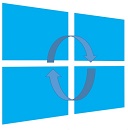This post has been republished via RSS; it originally appeared at: New blog articles in Microsoft Community Hub.
We are excited to announce general availability of the link feature for Managed Instance for SQL Server 2016 and 2019. Along with the earlier GA of the link feature for SQL Server 2022, we are now providing the most comprehensive solution for hybrid connectivity and data mobility between SQL Server hosted anywhere and Azure SQL Managed Instance.
Overview
Azure SQL Managed Instance is a fully managed PaaS service of choice for modernization of SQL Server workloads in Azure. You can enjoy benefits of Azure without moving your SQL Server, by setting up a hybrid connectivity between SQL Server and Azure SQL Managed instance using the link feature. Using the link, SQL Server databases are replicated near real-time to Azure using proven Always On technology. You can run the link for as long as you need it, weeks, months, and years at a time. With the link you can effortlessly make up-to-date copies of your data available in Azure regions, and modernize your workloads by taking advantage of Azure’s scale, performance, and benefits of modern neighboring services such are Machine Learning, Synapse Analytics, and many others. The link feature can also be used to scale your primary SQL Server workloads to Managed Instance, or to offload application read-only, reporting or analytics workloads to Managed Instance as a secondary.
Supported SQL Server versions
The link feature is now generally available for the following SQL Server major versions and editions:
| SQL Server version | Editions supported | OS supported | Servicing update requirements |
| SQL Server 2016 | Enterprise, developer, standard | Windows Server | SQL Server 2016 SP3, and SQL Server 2016 Azure connect pack |
| SQL Server 2019 | Enterprise, developer, standard | Windows Server | SQL Server 2019 CU20 |
| SQL Server 2022 | Enterprise, developer, standard | Windows Server, Linux | SQL Server 2022 RTM |
What’s new
With GA release we are pleased to announce the following feature updates for the link:
- Automated backups in Azure for replicated SQL Server databases
- New PowerShell scripts for automating creation and configuration of link
- CLI commands are now available for all link operations
Databases replicated from SQL Server using the link feature are now automatically backed up to Azure. All backups in Azure are protected with our industry leading SLAs. Never miss another backup of your on-premises SQL Server databases with automation the link feature provides. Your replicated SQL Server database backed up in Azure could be restored using PITR (Point in Time Restore) to any earlier point in time since the backup is available, and with a minute granularity. Database backed up in Azure could be restored as another database on the same, or another Managed Instance on your Azure subscription. With this feature you can easily create a stand-alone copy of your replicated on-premises SQL Server database in Azure for further use.
With fully automated PowerShell scripts we have now made it considerably easier to automate link operations. The scripts will allow you to prepare the environment, create and manage links at scale. We are also introducing the support for CLI commands for customers who prefer compact syntax and similarity with other scripting languages. It is also possible to use any combination of PowerShell and CLI commands if you prefer to do so for all your MI link automation jobs.
Next steps
To learn more about Managed Instance link feature and how you can use it in your scenarios of interest, head to the Overview of the Managed Instance link feature page and follow references to other related articles describing specific aspects of the feature into more details.
Share your feature feedback, improvement suggestions, or comments by contacting the product group through Managed Instance link user feedback, or post a comment below.

